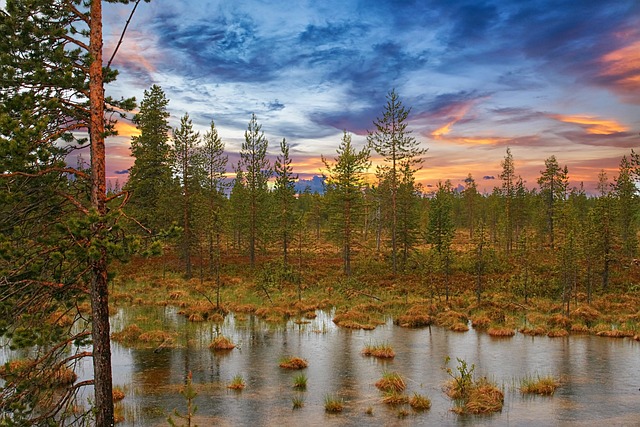For the proper functioning of the Earth and the development of its flora and fauna, it is important to preserve all its ecosystems, including wetlands. Let’s figure out what it is
What’s the trend?
The focus on wetland destruction fits into a global trend towards biodiversity conservation and sustainable use of natural resources. In recent years, more and more people have become aware of the importance of preserving natural ecosystems and biodiversity for life on the planet and the sustainable development of society.
A large-scale study has been published in the scientific journal Nature about how people have destroyed wetlands over the past three centuries, and the consequences of the disappearance of these areas for the Earth.
What are wetlands?

Wetlands are areas of the earth’s surface where water is important; it affects the state of the environment and the living conditions of plants and animals. These include swamps, peat bogs, and some reservoirs. They are also called “wetlands,” from the English term wetlands.
Like many of Earth’s wild places, wetlands have been systematically destroyed over the past 300 years. Cities, villages, and individual farms were built on them due to their location next to a water source. The drainage of swampy soils made it possible to create fertile areas for agriculture.
Importance of Wetlands
Wetlands are extremely important for ecology. They can purify water, filter and remove pollutants from the soil, displace flood waters, and provide animal shelter. They can also sequester and precipitate climate-affecting carbon, which combines with oxygen to form the gas (CO2 ) responsible for the greenhouse effect. Peatlands, for example, store at least twice as much carbon as all the world’s forests.
How many wetlands have disappeared?
A study in Nature reveals how many wetlands have been destroyed by humans since the 18th century. Previously, it was believed that up to 50% of these lands could disappear. According to new data, this figure is closer to 21% – in total, this area is the size of India. Some countries suffered greater losses than others. For example, Ireland lost more than 90% of its wetlands. The main reason was their drainage for agriculture.
The loss of a wetland of a few hectares may seem insignificant on a global scale. However, this can seriously affect neighboring settlements, which begin to flood in the spring and autumn. The process is also catastrophic for local flora and fauna. Approximately 40% of the Earth’s animal and plant species live and breed in wetlands. In addition, about a billion people depend on wetlands for food, raw materials, nutrients, and hydroelectricity.
Scientific work gives hope
In the study, the scientists described the challenges to wetland protection. For example, sometimes experts cannot determine whether an area falls into this category. This is because the amount of humidity in some regions in a given season is difficult to measure.
Researchers also note that the disappearance of territories occurs unevenly. Some parts of the world have lost more wetlands than the global average. The USA, India, China, Japan, European countries, and regions of Southeast Asia lost about 50% of such territories. This difference offers some hope because it suggests there is still plenty of wetland in the world that has not been destroyed – such as the vast northern peatlands of Siberia and Canada.
Gradual restoration of wetlands
Countries and international organizations are beginning to realize the importance of such territories. Some are taking legal action to force developers to recreate habitats they have destroyed. In the US, more than $10 billion has been spent on a 35-year restoration plan for the Everglades, a unique network of subtropical wetlands in Florida.
Many countries are working to create such territories. For example, in the UK, environmentalists are restoring beaver populations. These animals build dams, which create new wetlands and wildlife and reduce flood damage by 60%.